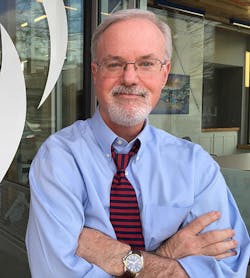Airport personnel have a number of exhausting challenges to face every shift, and need to remain alert and focused to ensure passenger safety. On top of the pressure to provide outstanding customer service, everyone involved with flight crews and airport functions is prone to exhaustion.
If flight crews aren’t getting the rest they need, they’re putting themselves, coworkers and even passengers and the general public at risk. With millions of people flying every day, it is vital to take a serious look at airport fatigue prevention because of physical safety and operational cost concerns.
The Physical Dangers of Airport Fatigue
When it comes to air safety, pilots and copilots need to have a high level of energy and awareness to remain safe and efficient. During flights, they need to have proper judgment to correctly perform all procedures involved and prevent any accidents.
However, pilots are not the only ones who need to rest. Everyone involved with airport operations assists with passenger safety and their performance levels can be greatly affected by fatigue. Working longer hours, frequently changing shifts, and sleeping in new places with different time zones can make it difficult to get adequate rest.
People on the ground are operating machinery to taxi planes, clean them, transfer baggage, and more. On top of this, many workers have long commutes after their shifts, leading to drowsiness and increased vehicular accidents.
Ninety-seven percent of workplaces experience fatigue, and fatigue in aviation leads to delayed responses, impaired judgment, muscle weakness, moodiness such as irritability, memory impairment, poor concentration, dizziness and more.
This makes it difficult for fatigued crews to safely perform their tasks and keep their wits about them as the potential for accidents skyrockets, potentially causing runway chaos and delays, not to mention expensive workers' comp cases.
The Operational Cost of Airport Fatigue
The National Safety Council estimates that declining performance from fatigue can cost employers as much as $3,100 annually per employee and that 43 percent of workers are sleep-deprived.
Hartsfield-Jackson Atlanta International Airport is America’s largest airport, with over 63,000 employees. If 43 percent of them are sleep deprived and each cost $3,100 annually in declining performance, that is a potential total loss of about $84 million each year – just from fatigue. According to the airport’s 2017 financial report, its operating revenue was about $498 million, meaning that fatigue has the potential to reduce its operating revenue by a staggering 16.87 percent.
In addition to the estimated cost of declining performance resulting from fatigue, fatigue can lead to user error and accidents, which can in turn cause delays. According to Airlines for America, the total direct operating cost for one flight is $62.55 per minute, or $3,753 per hour.
When it comes to the airline industry, time is most definitely money. The Bureau of Transportation Statistics estimates that 18 percent of U.S. flights were delayed in 2017. Airlines and airports can take steps to ensure that their employees are healthy and getting enough sleep to perform optimally.
Preventing Fatigue by Managing Sleep Apnea
One of the most common causes of fatigue is obstructive sleep apnea (OSA), a sleep disorder affecting about 18 million Americans. As many as 80 percent of sufferers remain undiagnosed because they don’t remember exhibiting the most common symptom: waking up multiple times in the night. When left untreated, sleep apnea can lead to congestive heart failure, stroke, depression, chronic fatigue, diabetes and many other health risks.
Usually symptoms like waking up with a headache, waking due to choking or coughing, and feeling exhausted after a night of seemly well rest go ignored unless a partner alerts the sufferer to a snoring problem. However, screening for sleep apnea is incredibly easy, so why wait?
Employers can empower employees to take action in their own homes. No need for a doctor’s office visit for an expensive, time-consuming test while trying to sleep when connected to tons of tubes in wires. Instead, you can contact a healthcare or durable medical equipment provider (DME) for an easy, at-home test.
The test will be shipped right to your employee’s door with simple instructions. It will measure your oxygen levels and breathing patterns, as well as pulse, to accurately detect when breathing stops.
Then, a qualified clinician will analyze the results to see if the employee has OSA. If they do, CPAP (Continuous Positive Airway Pressure) therapy is prescribed as a management tool, and is nearly 100 percent effective among compliant patients. This instantly improves quality of sleep and quality of life.
There are a variety of comfortable masks on the market to choose from to fit individual needs – including lightweight, portable devices to find the needs of flight crew members who are constantly on the move. DME specialists are even available to help find the right fit based on various prescriptions.
To easily and individually get CPAP through insurance, some medical equipment providers will contact your insurance company and doctors to have your CPAP device and supplies shipped to your door. The entire process is quick and convenient as they handle all of the complicated tasks for you.
It is time to put a stop to aviation fatigue, as the risks of sleep apnea create a growing danger. Aside from the major financial incentive for airports and airlines, flight crews need proper rest in order to keep themselves and passengers safe. Individuals and all parties involved in aviation have a responsibility to make flying as safe as possible – for everyone in the air and on the ground.
Michael Trufant is Industrial Markets Manager at Aeroflow Healthcare, a national provider of durable medical equipment (DME) products and industrial sleep apnea screening and treatment programs.
About the Author

